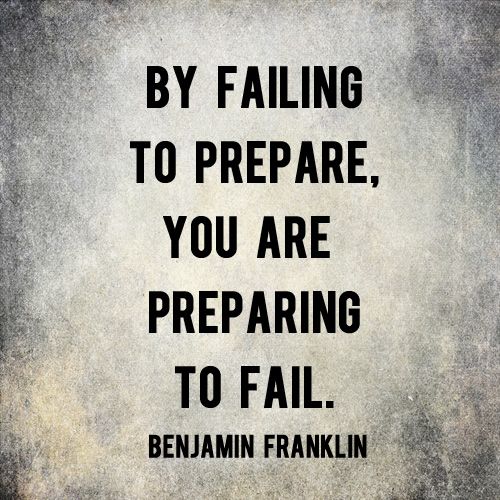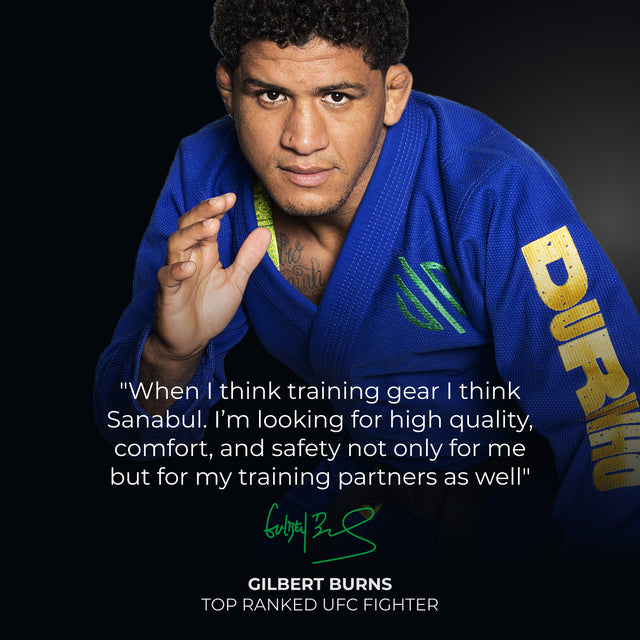Back to School ...Bullying?
Introduction
We would sincerely appreciate it if you could read this article until the end, as we included a lot of useful information regarding the topic of bullying.
If you believe that this article could be of some use or help someone else out in any way, feel free to send it to them!
And as always, thank you so much for your support!

As the end of summer approaches, the signs become more and more clear. August ends. September begins. The weather cools. Many fruits and produce go out of season.
For kids, the biggest, most upsetting, sigh-inducing sign of all… the dreaded… back to school.

The ultimate end to summer fun and freedom. The return to an 8 hour work… oh, uh I mean… school day. Instead of soaking in sunlight, hanging out with friends, and genuinely having a great time, kids everywhere will make their returns to the classroom.
They also return to their friends and classmates. A new year of experiences and learning material. However, a few will return to much worse than this:
Some will return to their bullies.
Bullying is not going away, it’s here to stay.

It would be great if schools were a safe environment for its students. Unfortunately, this is not always the case for some. Certain kids are harassed, made fun of, mocked, insulted, and worse. We all know there’s truth in the “kids can be cruel” saying. Many adults likely have experiences on both sides of the fence, from the things we’ve said when we were younger that we look back on and regret… to the words and actions used to attack us. Kids really can be mean

Bullying has always existed, no matter what measures have been implemented to completely eliminate it. That’s how it is and how it has always been. It’s the natural order of things. Just like in nature, predators attack prey who they deem as weaker. The same principle applies to bullying: certain people will identify those who they think are weaker than themselves and choose to go on the offensive.
But there’s a difference…

In nature, animals attack those they see as targets to survive (food vs no food), while bullies do this for fun/entertainment. The animals don’t have a choice. By instinct, they know they must do everything in their power to survive so they hunt whatever they can, especially if this means preying on weaker animals. Bullies have a choice. They don’t have to prey on those they see as weaker, but choose to attack for their enjoyment/pleasure. There’s no survival aspect involved. They pick on others (verbally, physically and/or both) because they want to, not because they have to.
We can’t end bullying, but we can prepare well to deal with it

The issue of bullying is one that will never go away for good, despite all of the campaigns against it. Even if it does eventually disappear, it will reappear eventually. That’s just the truth. Bullying is like an illness. It will find new ways to reappear, no matter what we throw at it. Once we acknowledge this, we can address and prepare for it properly.
If we do not accept the idea that bullying will always exist (especially in schools), then by this logic, we are saying there is a way to make bullying not exist. In other words, that would mean there’s a way to completely eliminate bullying. With this line of thinking, the goal would be on finding a way to eliminate bullying.
This takes away focus from properly preparing kids to deal with bullies, since resources are instead directed toward trying to end bullying – again, something we have already determined is not possible, unfortunately. Time, energy, and more are directed toward the wrong thing.
How to Prepare Kids to Deal with Bullies

Since bullying will always exist, the best way we can deal with bullying is to prepare our children, so that they are ready if they ever face these situations. Just like studying for a test we want to do well on, we would prepare. We don’t know the exact specifics of what will happen during the test, but have prepared for many different scenarios. Understanding concepts and ideas, so that we can adapt to the situation when it presents itself. Same idea applies to bullying!
Train Martial Arts, Learn Self Defense


One of (if not) THE BEST forms of preparation, for bullying and EVERYTHING else in life: martial arts.
When practitioners train martial arts, they learn simple, effective techniques. Types of martial arts are generally categorized by two different styles: striking and grappling.
Striking disciplines use forceful impact strikes (hence the name) to hit a target, while grappling disciplines involve the use of non-violent maneuvers to physically control another person. Both types of disciplines have many techniques to learn from a lot of different positions, mainly aimed at accomplishing the following tasks:
- Offense
- Defense
- Escaping vulnerable positions and transitioning into dominant ones


For striking, we recommend Muay Thai. For grappling, we recommend Brazilian Jiu Jitsu.
Jiu Jitsu is likely a better option for children because it will allow someone to non-violently control another person, without hurting them. The option to cause damage is available once you control them (if needed), but this is a choice (aka does not have to be done).
The video below shows how Matt Serra (UFC Hall of Famer, former UFC Welterweight Champion and Jiu Jitsu Black Belt) used his Jiu Jitsu skills to physically control another grown man, who was fully (drunkenly) resisting. Serra could have easily thrown punches, but ultimately showed great self-control, discipline, and restraint as he knew he had the situation fully under control.
Here, he speaks more on the altercation and explains the beauty of Jiu Jitsu:
Most people start out with one type of martial arts, to build a solid base of fundamental skills before trying out the other category. Others start training both at the same time. Experiment to figure out what works for you/your child!
We highly recommend that you do have basic knowledge, training, and experience in both striking and grappling arts. This will cover all areas that a potential fight can go, giving you the best possible chances to walk away unharmed no matter where the situation goes.
Discipline and Self-Control

Through these martial arts techniques, practitioners quickly understand the damage that they can do because they experience it first hand. Not only will practitioners practice techniques on others (in a controlled manner, as to avoid injury), but they will have it done on them so that their training partners also get to practice. When having techniques performed on you, you will feel exactly how effective they can be, which will give you a better grasp of exactly how useful martial arts training can be in a physical altercation.
By being the person on the receiving end of the technique, people naturally learn self-control, when using such techniques. They have felt what it’s like to be in that vulnerable position and how much it can suck. They don’t want to injure their training partners when they are in that spot, so they execute moves with controlled speed and power that allows them to still properly grasp the concept and movement (just without hurting anyone).
By training in this controlled manner – something that good instructors and gyms will enforce (which greatly helps mitigate injuries and risk of injuries) – practitioners will develop great self-discipline and self-control. They have enough discipline to not just recklessly go around and use the moves they learn to easily hurt others. They have enough self-control to carefully apply pressure, power, and speed in training and only when necessary outside of training.

Through this process, a deeper respect for the techniques and others are further developed
Fitness: Mental AND Physical

When you train martial arts, you’re not only learning self-defense. You’re developing really great mental and physical strength. You’re going to be put in difficult situations during training and you will fail. But, you will learn to overcome these obstacles. You’ll develop the ability to stay composed and adapt during these challenges, building both mental fortitude and resilience in the process!
When you train consistently, you’ll understand the techniques better. You’ll know how to move, when to do certain things, and be able to adapt quickly to the fast-paced action. You’ll be training with other people. You will have to adjust to their movement and the changing amount of resistance they give, using every part of your body (upper, middle/core, lower). You will be managing your body weight, your training partners’ weight, and their force/resistance. This will help you get in great shape because while you’re building full-body functional strength, you’re staying in constant motion (which will help build endurance).
Building relationships



When talking about the benefits of martial arts training, the social aspect is one factor that often doesn’t get enough credit. It’s easy to see why, because of all of the great mental and physical benefits combat sports training can lead to, but definitely should get more credit!
When you go through tough experiences and obstacles with other people, a bond is built. You have all suffered together and made it through training sessions. A deeper connection exists, as everyone is in the gym to learn and improve. Since you guys go through really hard training together, it’s natural to want to get to know the people you’re with. Eventually (usually pretty quickly), get to know your training partners. People who were once strangers quickly become friends and people you eventually consider family.

Training in martial arts is a really great way to meet new people and build new relationships. You bond over training and shared interests outside of training! Plus, you expand your own community in both quality and quantity, when you add a bunch of skilled martial artists!


Martial Arts: Benefits for Children

Children who train understand that while they know martial arts, they will use it when necessary. They will usually try to avoid conflict and de-escalate situations because they realize that it could be bad for the other person, if any physical altercation were to take place.
They have the discipline not to attack until they believe they are in danger, despite being fully capable to do so at any time they choose. They have the self-control to not take advantage of their untrained classmates and not just go around hurting people. They control themselves in their composure and through the moves they execute, if ever needed as they don’t hurt their classmates, they just do enough to stop them. This allows both parties to walk away without harm.
When kids are put in training, they have an activity. Not just to keep them occupied, but to learn actual life skills and gain invaluable experience. They develop skills like problem solving, adapting to overcome obstacles, not giving up when things get tough, and other great mental fortitude attributes!
Martial arts also gives children a safe outlet to expend their energy. While learning self defense, they get a good workout in. They’re in constant motion and using a wide range of muscles. This full-body workout will help keep them in shape by building strength and endurance on the mats! This teaches them the importance of being healthy as they will soon realize for themselves that being healthy through training allows them to do things that their classmates can’t (ex. run faster for longer, be stronger, and most importantly – actually know how to fight if they need to)
In the gym, their training will be supervised by a trained and experienced instructor who will teach them in a controlled gym environment. This instructor will make sure everyone is performing at a controlled level, to help make sure that nobody gets hurt in training. Gyms always allow parents to stay and watch their kids train, so that the parents can see exactly how their kids are doing!
A combination of all of these factors (and there are other positive ones not mentioned here, as well), will contribute to valuable training experience for your child.
Preparation for a Bullying Situation
Martial arts training prepares children for bullying in multiple ways. Thanks to training:
(1) Your child will know how to defend themselves from physical harm, if ever threatened or in such a situation
(2) Your child will have the capabilities and skills to defend others from harm in bullying situations (siblings, cousins, friends, etc)
(3) Your child will generally be more respectful, responsible, focused, disciplined, confident, and physically capable than their peers (which can help deter bullies from going after them)
The following are some suggestions we recommend, if your child ever experiences a bullying situation:
Disclaimer: Not legal advice. These are suggestions.
In School

- STAND UP FOR YOURSELF. If you don’t, a bully will continue to be a bully because they think it’s okay. Let them know that it is not. If you never stick up for yourself, they will continue to target you. They are wrong for picking on you. You are right for standing up for yourself
- Defend yourself, IF AND ONLY IF you are physically attacked. You have the training and the skills to defend yourself. You have every right to keep yourself safe, if you believe you are in danger or if you are attacked.
- Get help. Go to a trusted adult (teacher, counselor) and tell them about the situation. They may be able to help
- Don’t let their words affect you. “Sticks and stones may break my bones, but words will never hurt me.”
- Say “Ok”. Whatever they say to harass you, insult you, demean you, hurt you, just say “ok”. Eventually they will go away because they see that their words aren’t affecting you
At home
- Tell your parents/guardians about the situation in school. All of the details: who, what, when, where, why, and how. Tell them as much as you remember about what has been taking place
Preventative measures
To help keep bullies away:
- Stay with a group, if you can. Always stay near your friends or a trusted adult. Bullies will have a harder time picking on you if there is another person there to help you.
- Tell a trusted adult about any bullying incidents in the past. This will make them aware of it, so they can keep an eye out and help protect you
Resources related to article content on martial arts, bullying, and more:
Joe Rogan on Learning Jiu-Jitsu for Self Defense
Bas Rutten (MMA Pioneer, Martial Arts legend) defending himself from bullies
How Georges Saint Pierre Stopped Getting Bullied At School
Why EVERY Child Needs Jiu Jitsu
How To Properly Encourage Kids To Start Jiu Jitsu - Jocko Willink
What martial art should I put my kids in? - Jocko Willink
Luis's 1-Week Transformation: "A Gracie Bullyproof Bounceback" (learning Jiu Jitsu self-defense after being attacked by bully in school)
Sanabul Kids’ Training Collection (for all your child’s training equipment!)
Thank you for reading - we hope this article was informative and could be of some help to you or your child!





0 Comments
There are no comments for this article. Be the first one to leave a message!